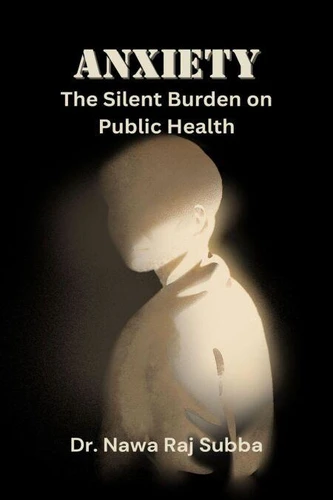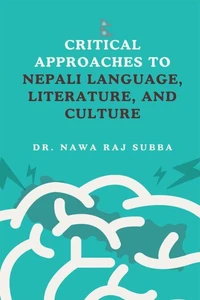Nouveauté
Anxiety: The Silent Burden of Public Health
Par :Formats :
Disponible dans votre compte client Decitre ou Furet du Nord dès validation de votre commande. Le format ePub est :
- Compatible avec une lecture sur My Vivlio (smartphone, tablette, ordinateur)
- Compatible avec une lecture sur liseuses Vivlio
- Pour les liseuses autres que Vivlio, vous devez utiliser le logiciel Adobe Digital Edition. Non compatible avec la lecture sur les liseuses Kindle, Remarkable et Sony
 , qui est-ce ?
, qui est-ce ?Notre partenaire de plateforme de lecture numérique où vous retrouverez l'ensemble de vos ebooks gratuitement
Pour en savoir plus sur nos ebooks, consultez notre aide en ligne ici
- FormatePub
- ISBN8232482978
- EAN9798232482978
- Date de parution10/10/2025
- Protection num.pas de protection
- Infos supplémentairesepub
- ÉditeurHamza elmir
Résumé
Anxiety is the endemic of our age that is invisible - it is not fast or easy to accept. But its effect is experienced in every level of the body, brains and society. The book is an effort at perceiving this silent crisis from a scientific, practical and human perspective. The introductory chapter determines the anxiety and its general health consequences. The different disorders caused by anxiety and their biological and psychological context are then examined.
The book examines the causes of anxiety in a many-sided approach - personally, socially, chemically and culturally. Chapters V to VII talk more about the connection between the mind and the body. It is holistically explained how daily habits, including sleep, nutrition, and exercise, which are the pillars of managing anxiety, are. In addition to this, the role of therapy in shaping a healthy lifestyle and self-efficacy has also been well brought out. The following section dwells on practical issues - how to select the right therapist, how to develop a supportive relationship, and when medication or medical intervention is required.
It allows the reader to self-realise and make decisions. The last section of the book is devoted to the realistic means of coping with anxiety at a workplace, and it can be useful to prevent losing balance and productivity in the professional domain. Altogether, Anxiety: Invisible Pressures in Public Health is not only a psychological work but also an effort to establish balance in all spheres of life.
The book is an excellent guide for health care workers, researchers, students, and any other person concerned with self-development. The reader is taught to view anxiety as a legible messenger, not an enemy, as the reader reads it, since being healthy does not mean being free of disease but having an alert mind.
The book examines the causes of anxiety in a many-sided approach - personally, socially, chemically and culturally. Chapters V to VII talk more about the connection between the mind and the body. It is holistically explained how daily habits, including sleep, nutrition, and exercise, which are the pillars of managing anxiety, are. In addition to this, the role of therapy in shaping a healthy lifestyle and self-efficacy has also been well brought out. The following section dwells on practical issues - how to select the right therapist, how to develop a supportive relationship, and when medication or medical intervention is required.
It allows the reader to self-realise and make decisions. The last section of the book is devoted to the realistic means of coping with anxiety at a workplace, and it can be useful to prevent losing balance and productivity in the professional domain. Altogether, Anxiety: Invisible Pressures in Public Health is not only a psychological work but also an effort to establish balance in all spheres of life.
The book is an excellent guide for health care workers, researchers, students, and any other person concerned with self-development. The reader is taught to view anxiety as a legible messenger, not an enemy, as the reader reads it, since being healthy does not mean being free of disease but having an alert mind.
Anxiety is the endemic of our age that is invisible - it is not fast or easy to accept. But its effect is experienced in every level of the body, brains and society. The book is an effort at perceiving this silent crisis from a scientific, practical and human perspective. The introductory chapter determines the anxiety and its general health consequences. The different disorders caused by anxiety and their biological and psychological context are then examined.
The book examines the causes of anxiety in a many-sided approach - personally, socially, chemically and culturally. Chapters V to VII talk more about the connection between the mind and the body. It is holistically explained how daily habits, including sleep, nutrition, and exercise, which are the pillars of managing anxiety, are. In addition to this, the role of therapy in shaping a healthy lifestyle and self-efficacy has also been well brought out. The following section dwells on practical issues - how to select the right therapist, how to develop a supportive relationship, and when medication or medical intervention is required.
It allows the reader to self-realise and make decisions. The last section of the book is devoted to the realistic means of coping with anxiety at a workplace, and it can be useful to prevent losing balance and productivity in the professional domain. Altogether, Anxiety: Invisible Pressures in Public Health is not only a psychological work but also an effort to establish balance in all spheres of life.
The book is an excellent guide for health care workers, researchers, students, and any other person concerned with self-development. The reader is taught to view anxiety as a legible messenger, not an enemy, as the reader reads it, since being healthy does not mean being free of disease but having an alert mind.
The book examines the causes of anxiety in a many-sided approach - personally, socially, chemically and culturally. Chapters V to VII talk more about the connection between the mind and the body. It is holistically explained how daily habits, including sleep, nutrition, and exercise, which are the pillars of managing anxiety, are. In addition to this, the role of therapy in shaping a healthy lifestyle and self-efficacy has also been well brought out. The following section dwells on practical issues - how to select the right therapist, how to develop a supportive relationship, and when medication or medical intervention is required.
It allows the reader to self-realise and make decisions. The last section of the book is devoted to the realistic means of coping with anxiety at a workplace, and it can be useful to prevent losing balance and productivity in the professional domain. Altogether, Anxiety: Invisible Pressures in Public Health is not only a psychological work but also an effort to establish balance in all spheres of life.
The book is an excellent guide for health care workers, researchers, students, and any other person concerned with self-development. The reader is taught to view anxiety as a legible messenger, not an enemy, as the reader reads it, since being healthy does not mean being free of disease but having an alert mind.





















